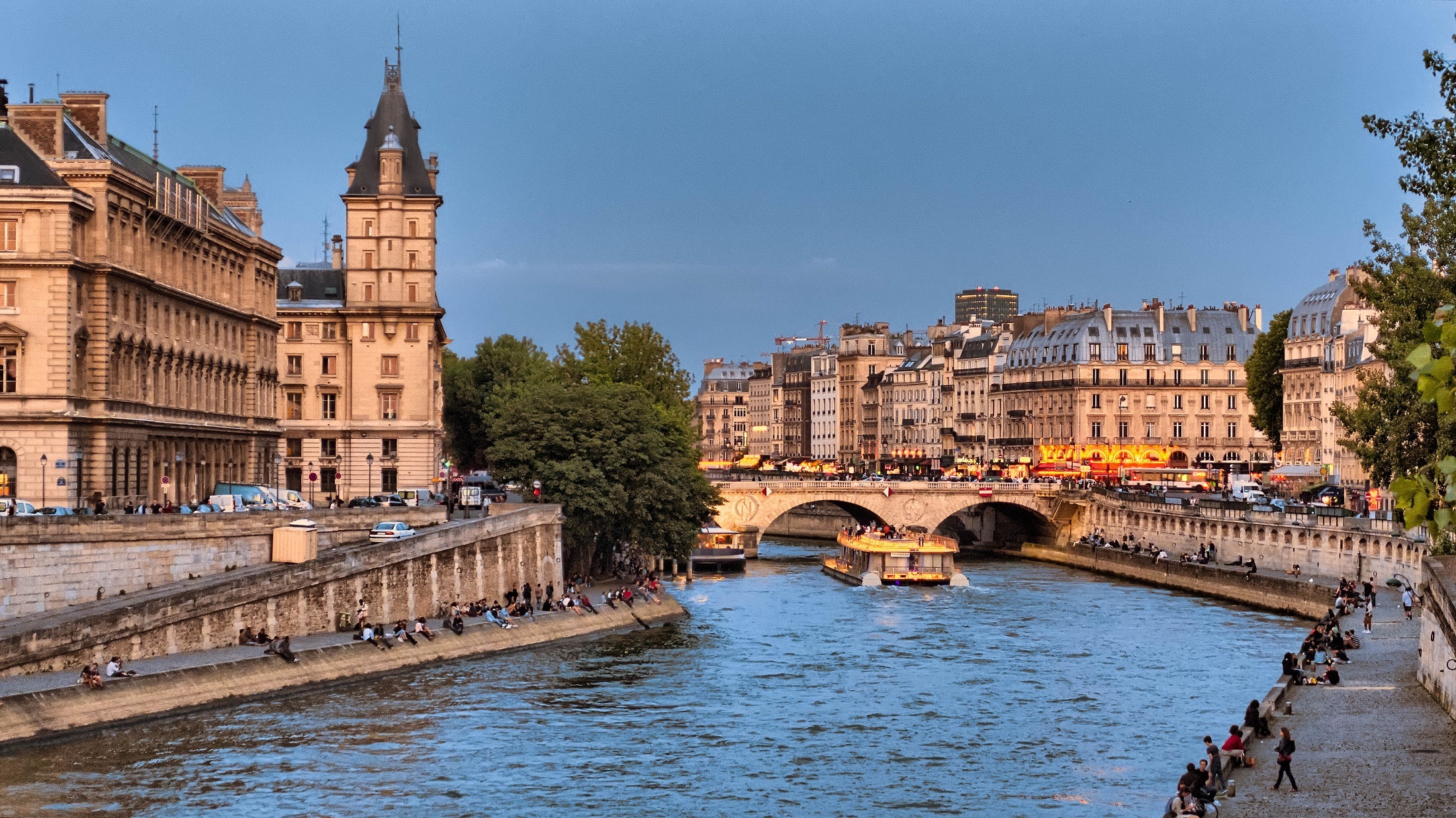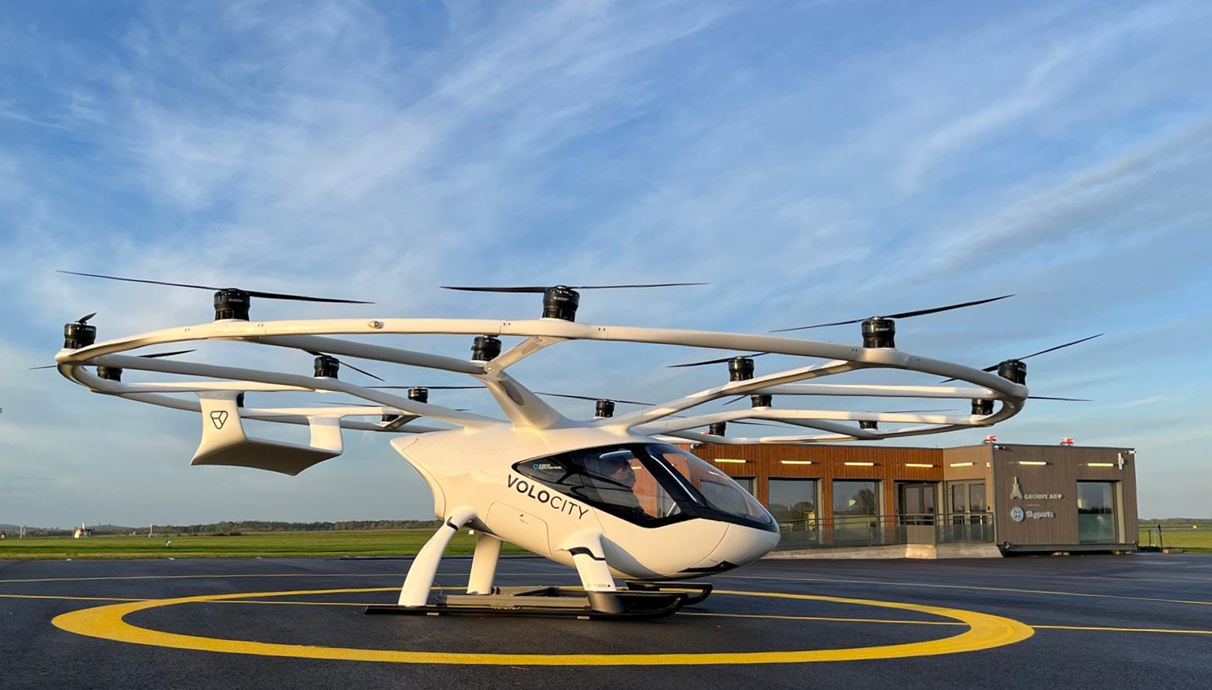Paris: Green light for Vertiport on the Seine

Billboard
Skyscrapper
Halfpage
Ahead of the Olympic Summer Games 2024, France has approved a flying taxi port. The vertiport will be located on the river Seine on a barge. This temporary experiment will showcase what the future of urban aerial mobility could look like.
Volocopter, a German aerospace company, wants to conduct demonstration flights for its flying taxi service during the Paris Olympics. In July 2024, the company received temporary authorisation for its vertiport on the river Seine. This landing pad is designed for vertical take-off. It will be located near the Austerlitz railway station in the city. According to the Aeroports de Paris Group, ADP, the French Transport Minister committed to conducting a temporary experiment in the quays of the river Seine from July to December 2024 with the particular goal of testing health uses. Now, Volocopter is waiting for flight authorisations from the French Civil Aviation Authority. City Hall has been opposing the flying taxi project.
Trial period for Volocopter
Gare d’Austerlitz is one of the seven large railway stations in Paris. It is located next to the river Seine, which will soon host a vertiport for flying taxis. This floating landing pad will serve for flight demonstrations during the Paris Olympics. Air taxi developer Volocopter and the Paris’ airport authority Groupe ADP have announced their intentions to operate Europe’s first commercial air taxi flights, making the long-standing dream of flying taxis in cities a reality.
However, during the Olympic Games, there will likely only be demonstrations. The aircraft by Volocopter has not yet received authorisation from the European Aviation Safety Agency and the French Directorate General for Civil Aviation to fly with a paying passenger. It seems likely that this authorisation will come in autumn 2024.
Operations at the vertiport are strictly regulated: They can only happen between 8 and 5 pm with no more than two flights per hour. Over the whole trial period, only 900 movements may be conducted. This amounts to 50 full days of operations with two flights an hour. But due to the experimental nature of the aircraft, it is likely that there will be less movement.

A project only for the super-rich
Already, there are four vertiports in the Paris suburbs, one of them at Charles de Gaulle airport and one at Paris-Le Bourget airport. The Austerlitz Seine will be the first one close to the city centre, as well as the first one on the Seine.
So far, reactions have been mixed. Some city officials have criticised the idea due to worries about environmental harm. An impact assessment for the vertiport has been deemed as “incomplete” regarding issues such as noise pollution and greenhouse gas emissions. Paris City Hall is mostly opposed to the project and has said that it would take legal action on environmental grounds.
President Emmanuel Macron has supported the flying taxis. He sees them as a symbol of the country’s innovation and technological progress. His idea was to offer air-born taxi rides across Paris during the Olympics.
However, the helicopter-like craft is still a very new invention. Volocopter’s competitors Joby Aviation and Archer Aviation also applied to provide flying taxis for the Paris Games. They met similar regulatory hurdles. In addition, the two-seater flying taxi would be very expensive, making it a project only for the super-rich – something that doesn’t sit well with Parisians.

eVTOLs as a low-carbon alternative?
Volocopter’s VoloCity model is an eVTOL, an electric vertical take-off and landing aircraft. Its body looks like that of a conventional helicopter. But instead of rotors, it has 18 battery-powered propellers. Dirk Hoke, CEO of the company, is hoping that the Paris demonstrations will mark the dawn of a new era of urban air mobility. By the 2030s, he thinks that this technology will be spreading around the world.
Already, the company has 700 employees and a lot of investors. It has completed a series of test flights in Neom, the futuristic city planned in Saudi Arabia. By late 2026, Volocopter aims to develop a six-seater aircraft that will offer commuters a chance to beat traffic. In cities with rivers or other large bodies of water, floating vertiports could be an interesting avenue to explore.
Supporters of flying taxis emphasise their electrical power, which can be a low-carbon alternative to conventional aviation. Future larger versions of the eVTOLs could be used as ambulances, for example. But it will surely take at least a few more years to properly test these ambitious aircraft models and figure out a way for them to fit into the ever more sustainable word of urban transportation.
Read more about the future of flying cars and the futuristic Snap Up Car here.












